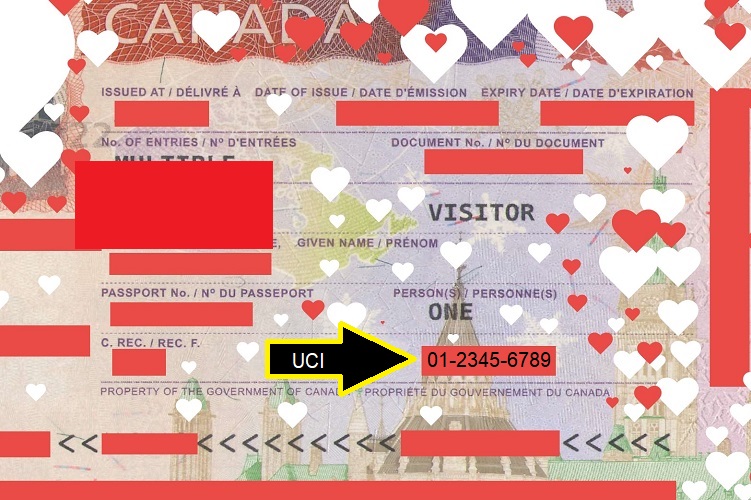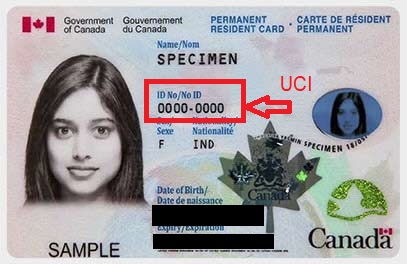What Does Uci Stand for in Immigration Canada
It seems we enjoy using complex words in every profession. Of course, the Canadian immigration system is no exception. For example, visit our Glossary for some acronyms we use. The current article discusses three terms: UCI, Application Number (or File Number) and Document Number.
Table of contents
- UCI
- Does UCI change?
- How do I find my UCI?
- Application Number or File Number
- Does the file number change?
- Locating a file number
- Document Number
- Ask your questions
What is UCI?
When you interact with IRCC, they assign a unique number to you. This number consists of either ten digits such as 01-2345-6789 or eight figures such as 1234-5678. Regardless of the number of digits, they call this combination UCI. Of course, UCI stands for Unique Client Identifier. A UCI belongs to the applicant. Therefore, IRCC can link you to all of them with this number's help if you have multiple applications. Consequently, if a family of four apply for immigration or visa, each member receives a separate UCI.
Sometimes IRCC issues temporary UCIs for the applicants. Here are two examples:
- CAN000123456789 for Express Entry applicants
- X01-2345-6789 or T01-2345-6789 for other applicants
Of course, they will eventually replace these numbers with an actual eight or ten-digit UCI.
Does UCI change?
UCI is the same for every applicant for the rest of their lives. Therefore, your UCI remains the same for all the applications you submit to IRCC. It is also the same for all the interactions you have with CBSA. Consequently, if you already know your UCI, you may use it for your future applications.
How do I find my UCI?
You possess a UCI only if you have interacted with the Canadian immigration authorities in the past. Of course, the interaction could be any of the following:
- Applying for temporary statuses such as an eTA, a TRV, a work permit or a study permit
- Facing a removal order
- Immigrating to Canada
- Sponsoring your spouse or common-law partner (both inland and outside-Canada options)
- Refugee claims inside Canada
- Sponsoring other family members such as parents or grandparents, siblings, nieces or nephews, or aunts or uncles
Nonetheless, this list is not exclusive. When you interact with the immigration authorities, they communicate with you. For example, you may receive any of the following:
- An email
- The AOR letter
- COPR
- Visa counterfoil
- PR Card
All these documents include your UCI. Therefore, look for the 8 or 11 digit UCI on them. Sometimes, they add UCI or Client ID term next to the number. However, the visa counterfoils are a bit tricky. The following picture shows how to locate the UCI on this document.

The following picture shows how to locate the UCI on a PR card. Of course, the picture is not an actual PR card and only a sample image by IRCC.

What is the Application Number (file number)?
Application number or file number refers to a number unique to the application you have submitted. This number usually begins with one or more letters, followed by nine digits. For example,
- E123456789 for economic immigration,
- V123456789 for TRV, Visitor Record, or eTA,
- S123456789 for the study permit,
- W123456789 for the work permit,
- H123456789 for Humanitarian and Compassionate considerations,
- L123456789 for refugee claimants,
- C123456789 for citizenship applications,
- D123456789 for TRP,
- RHB1234567 for rehabilitation,
- ARC1234567 for ARC,
- F123456789 for family reunification,
- EP12345678 for PNP applications,
- N123456789 for Removal orders,
- G123456789 for refugee resettlement or protected people PR application, and
- PR12345678 for Citizenship certificates.
Of course, instead of 12345678, you will receive a unique number. Sometimes IRCC issues temporary file numbers. Therefore, you see an X at the beginning of the application number. However, if they proceed with the application, they will remove the X. On rare occasions, they could replace the temporary file number with a completely new one.
Does the file number change?
The file number or application number remains the same for the same application. Consequently, you won't face changes to the file number throughout the same application. Of course, if you have received a temporary application number, you could see a new permanent one. However, the permanent file numbers remain the same for the same application. Needless to say, if you open a new application, you'll receive a new file number.
How do I find my application number?
The best way to locate an immigration file number is by referring to the IRCC correspondences. For example, the emails you receive from them or the letters they mail to you. If you have an immigration representative, then you may ask them to assist you.
What is Document Number?
A document number is a number attached to a document. For example, when you receive a Work Permit, you may see a document number on the work permit paper. Consequently, a document number is unique to the document and different from UCI or the Application Number.
Every person may have only one UCI with IRCC, but they may have multiple application numbers. As you may receive numerous documents from them, you may also have various document numbers in hand. You may consider reading the following article for more information about your immigration options:
- Canada Immigration Options
Ask your immigration questions!
If you have an immigration-related question, fill out the following form. Of course, I'll do my best to answer general questions under the Q&A category. A widespread issue is like I responded to here (i.e. UCI, Application Number and Document Number). However, if the question is case-specific, I'll advise you to book a consultation session.
Share it!
If you wish to visit or move to Canada, please fill out our free assessment form. We will review it for free, but we will contact you only if we find an opportunity for you. Alternatively, you may book a consultation session. Consultation sessions are not free, but you will receive formal advice from a licensed practitioner.

Al Parsai, MA, DTM, RCIC
Regulated Canadian Immigration Consultant
Ashton College Instructor – Immigration Consulting
Author – 88 Tips on Immigration to Canada
Fill our Free Canada Immigration Assessment Form in your language!
Disclaimer:
This article provides information of a general nature only. Considering the fluid nature of the immigration world, it may no longer be current. Of course, the item does not give legal advice. Therefore, do not rely on it as legal advice or immigration advice. Consequently, no one could hold us accountable for the content of these articles. Of course, if you have specific legal questions, you must consult a lawyer. Alternatively, if you are looking for immigration advice, book an appointment.
The characters and places in the articles:
All the characters and locations in the articles are fictional, unless otherwise clearly stated. Therefore, any resemblance in names, dates, and places is coincidental.
Important Notes:
For our official addresses, trust this website only. We currently do not have offices outside Canada. Therefore, anyone who claims to be our agent is committing fraud. Also, note that we do not issue any work permits or study permits or similar documents. The government of Canada has the sole authority to issue such material.
Click to read the disclaimer.
Al Parsai
Al Parsai is a Regulated Canadian Immigration Consultant (RCIC) in Toronto, Canada. He also teaches immigration courses at Ashton College in Vancouver, Canada. Al, who holds a Master of Laws (LLM) degree from York University, is a member of ICCRC and CAPIC organizations. Al, the CEO of Parsai Immigration Services, has represented thousands of applicants from more than 50 countries to the immigration authorities since January 2011.
What Does Uci Stand for in Immigration Canada
Source: https://www.settler.ca/english/uci-application-number-canada/
0 Response to "What Does Uci Stand for in Immigration Canada"
Post a Comment